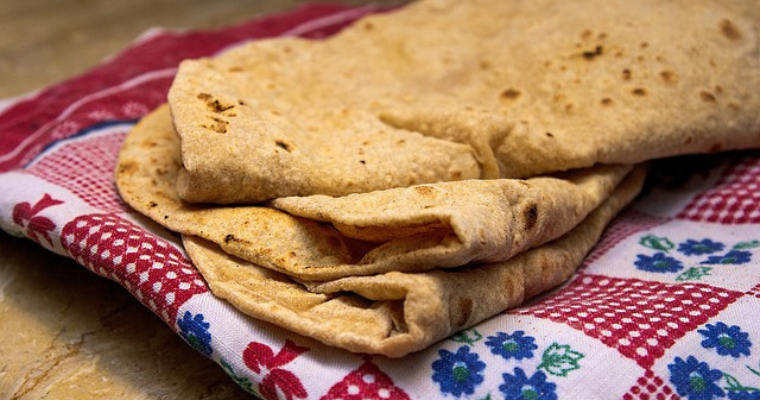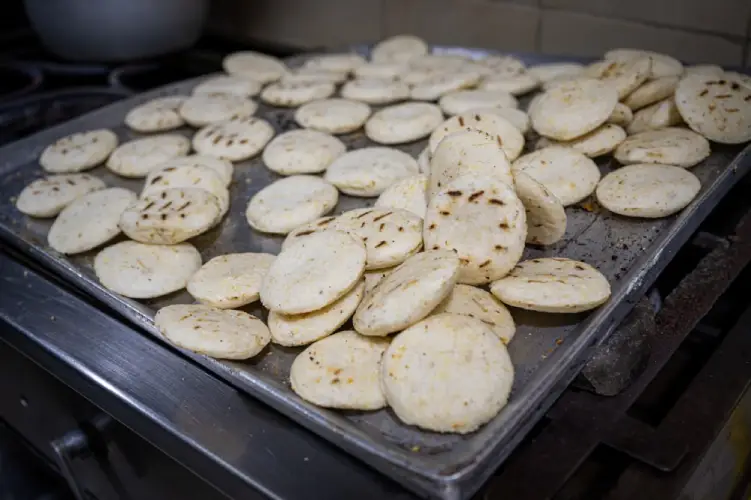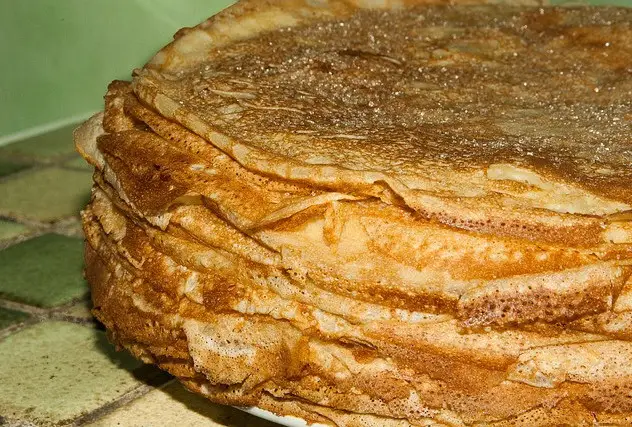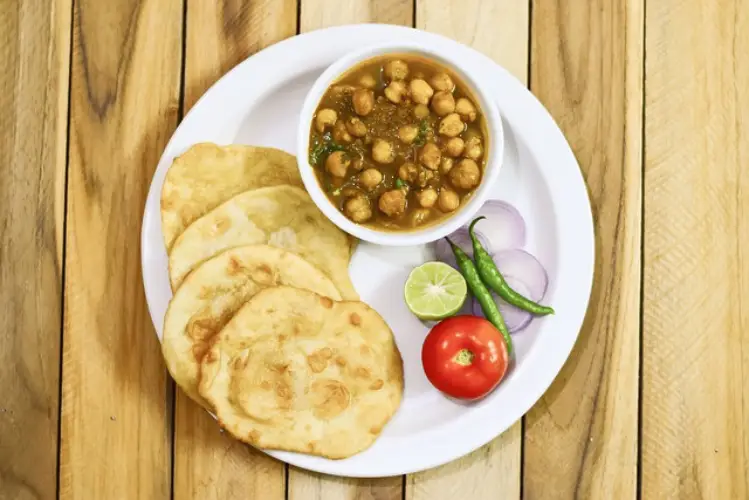Naturally Gluten-free Flatbreads

Today, we will take a journey through the history, benefits and options of Naturally Gluten free Flatbreads.
When we think of flatbreads, traditional wheat-based varieties often come to mind.
However, there is an entire world of non-wheat flatbreads that awaits our exploration.
Join us as we discover the flavors and cultures behind these unique creations.
The Diversity of Flatbreads
Flatbreads have been a dietary staple across continents for centuries.
While cherished for their versatility, convenience, and rich history.
While wheat-based flatbreads are familiar, non-wheat alternatives open up a realm of culinary possibilities.
The Benefits of Avoiding Wheat Products
While wheat-based products are a dietary staple for many, there are compelling reasons to explore gluten-free flatbreads.
Gluten Sensitivity and Celiac Disease
For individuals with gluten sensitivities or celiac disease consuming GMO wheat products can lead to digestive discomfort and long-term health issues.
Gluten-free flatbreads offer a safe alternative without compromising taste or texture.
Nutritional Variety
Using alternative flours like chickpea, corn, rice or cauliflower adds a nutritional dimension to your diet. These flours often contain more fiber, vitamins, and minerals compared to highly refined wheat flour.
Low-Carb and Weight Management
Also, many gluten-free options can be lower in carbohydrates, making them suitable for those following low-carb or plant-based diets.
Non-Wheat Flatbreads of the World

Arepa Cornmeal Flatbread
A beloved Venezuelan and Colombian staple Arepa are crafted from cornmeal.
In addition, naturally gluten-free it’s incredibly versatile perfect for sandwiches, toppings, or simply enjoyed on its own.
Its slightly sweet, earthy flavor is a testament to the rich history of maize in the region.
Cauliflower Flatbread (Cauliflower Pizza Crust)
Cauliflower flatbread, known as cauliflower pizza crust, provides a low-carb, gluten-free alternative for pizza lovers.
Specifically, using cauliflower as a base, you create a nutritious and delicious canvas for your favorite pizza toppings.
It’s an innovative twist that has gained popularity among those seeking a lighter option.
Rice Flour Flatbreads
In Asia, rice serves as a staple grain and people use its flour to craft a diverse range of gluten-free flatbreads.
Indian Rice Flour Flatbread
Akki Roti is a popular South Indian flatbread made from rice flour.
It’s typically mixed with water, salt, and sometimes spices to form a dough, which is then flattened into thin rounds and cooked on a griddle.
It’s a savory and gluten-free flatbread often flavored with ingredients like chopped onions, green chilies, and cilantro.
Additionally, rice-based flatbreads with a hint of fermentation offer unique flavors and textures.
Tapioca Flatbreads
Tapioca, derived from cassava root, is a popular ingredient for gluten-free flatbreads and pancakes.
Brazilian Tapioca
Brazilian Tapioca stands out as a versatile and plant-based flatbread crafted from tapioca flour and water.
Thai Tapioca Pancakes (Khanom Bueang)
Offer a delightful twist on crispy tapioca pancakes that exclude dairy or meat.
Indonesian Serabi
A delightful option as coconut and rice flour pancakes that readily lend themselves to adaptation into a plant-based version.
So, as you can see these flatbreads showcase the culinary versatility of tapioca.
Be sure to sign up for your > Free 12 Tips Food Guide <
Flatbreads of Africa
Sorghum and Millet Flatbreads
Sub-Saharan Africa relies on sorghum and millet as staple grains for gluten-free flatbreads.
Ethiopia’s Injera, a spongy sourdough flatbread made from teff flour not only satisfies dietary needs but also enrich meals with vital nutrients.
Plantain and Cassava Flatbreads
West African cuisine features plantains and cassava prominently.
Kelewele in Ghana made from spiced plantain dough and Nigeria’s Garri, a fermented cassava flour used for eba, demonstrate the region’s creativity.
These gluten free flatbreads are nutritious, delicious and culturally significant.
Lentils and Alternative Legumes in Flatbreads
Legumes including lentils, chickpeas, mung beans, and fava beans, have played a significant role in creating gluten-free flatbreads across various cultures.

Lentils: The Ancient Protein-Rich Flatbread
Lentils, known for their protein, fiber, vitamins, and minerals.
Have been used for centuries to create gluten-free flatbreads like Paruppu Roti in South India.
These flatbreads incorporate lentil flour, lending a rich, savory flavor enhanced by aromatic spices.
Chana Dal: The Basis for Nutty Goodness
Chana dal, a type of split chickpea, is commonly used in India to make Besan Roti, a gluten-free flatbread.
Seasoned with spices, water, and sometimes yogurt it offers a slightly savory, delicious alternative to wheat-based roti.
Chickpea Flour Flatbread
Socca, originating in Southern France and Italy, is a gluten-free flatbread primarily made from chickpea flour.
Its nutty flavor, crispy exterior, and tender interior make it incredibly versatile. Whether enjoyed plain or adorned with toppings. Socca offers a delightful departure from the familiar wheat bread.
Mung Bean Flour: A Versatile Legume
Mung beans and mung bean flour are used to create Bindaetteok, savory mung bean pancakes popular in Korea.
Ground mung beans mixed with vegetables and seasonings result in crispy gluten-free flatbreads.
Fava Beans: A Mediterranean Twist
Fava beans are used in Mediterranean cuisine to create hearty, earthy flatbreads.
These flatbreads often blend fava bean flour with other gluten-free flours, producing a rich, savory flavor.
Nutritional Benefits
Using alternative flours in non-wheat flatbreads offers several health advantages.
Increased Fiber:
Many alternative flours, such as chickpea, millet, and sorghum, are naturally higher in dietary fiber compared to refined wheat flour.
Moreover, Fiber aids digestion, promotes satiety, and been known to supports heart health.
Essential Nutrients:
Specifically, Alternative flours often provide essential nutrients like vitamins, minerals, and antioxidants.
For instance, chickpea flour is rich in folate and magnesium, while millet flour is a good source of iron and B-vitamins.
Conclusion

In closing, the world of flatbreads expands far beyond traditional wheat flour.
Addtionally, it offers a myriad of gluten-free options, from the nutty Socca to the comforting Arepa.
The innovative cauliflower pizza crust and the legume-based flatbreads like Paruppu Roti, Besan Roti, Bindaetteok, and fava Gluten bean flatbreads.
Furthermore, the culinary journey doesn’t end here. In our next post we’ll introduce you to four delightful gluten-free flatbread recipes that bring together flavors from different corners of the world.
CHICKPEA FLOUR FLATBREAD SOCCA RECIPE
COCONUT FLOUR FLATBREAD RECIPE
AREPAS FLATBREAD RECIPE
LENTIL FLATBREAD (MOONG DAL ROTI)
So, embrace this culinary diversity and enjoy a journey of exploring new flavors.
By doing so, you’ll unlock the rich flavors and traditions that these flatbreads bring to your table.
Ultimately, fostering connections with cultures across the globe through the joy of food.
Happy flatbread-making!
Please leave us a comment if you enjoyed our review of Naturally Gluten free Flatbreads or have any additional questions.
Cheers,
Plantaful Life Team
Disclaimer: The information shared in this blog post and on our website is for educational and informational purposes only. We are here to inspire and support you on your plant-based journey. However, always prioritize your health and consult with your trusted healthcare provider for personalized advice. By using our website, you acknowledge and agree that you have read and understood this medical disclaimer. Additionally, you acknowledge the significance of seeking professional medical advice for your specific health needs.
References:
What are Beans and Legumes? – Plantaful Life
Healthy Flatbread Recipes – Plantaful Life
Harvard Medical School